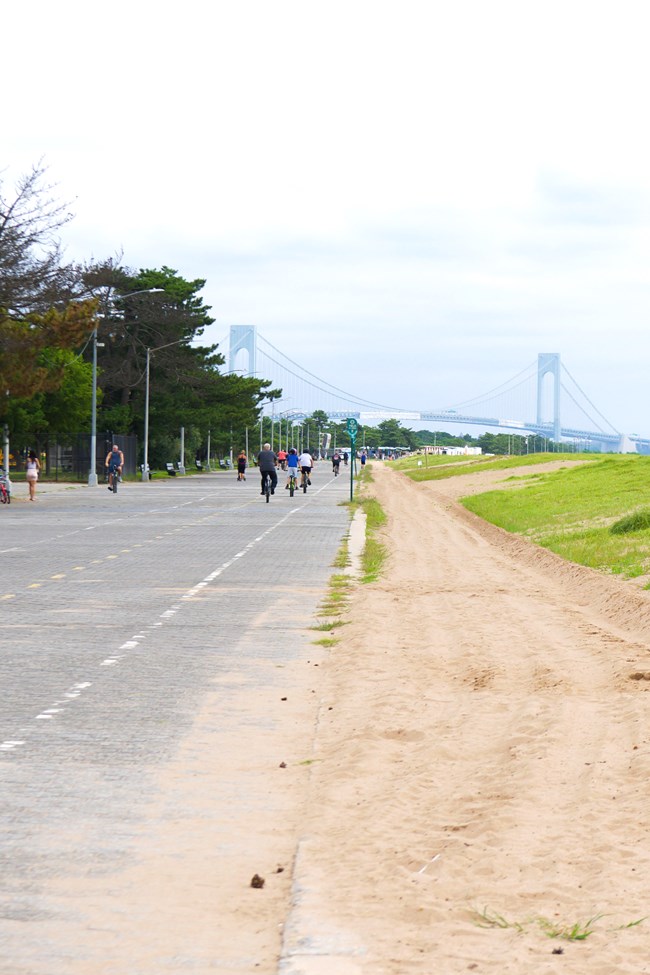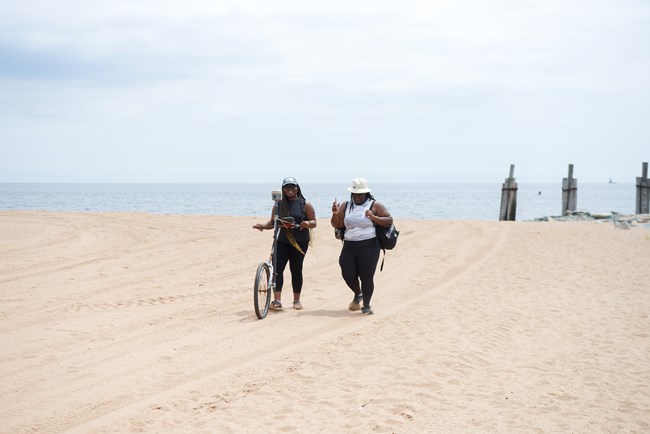
Bridget Ye / NPS Photo
Coastal landscapes are some of the most beautiful and dynamic places. As storms, more frequent and more intense, approach our shores, our coasts are the first lines of defense for our infrastructure, resources, and wellbeing. Beaches, sand dunes, rounded bluffs, and jagged cliffs all buffer against oceanic and atmospheric forces. Many are also eroding because of the very mechanisms they protect against. The presence of human infrastructure further means coastal landforms have little room to adapt and migrate inland.
In addition to monitoring shoreline position, the Northeast Coastal and Barrier Network monitors coastal topography as a vital sign of habitat resilience. Understanding the conditions and impact responses of coastal landforms are crucial to managing climate adaptation at our parks.
How We Monitor:
- Configure GPS receiver to record elevation every second on map of coastal area. Set up satellite rover device to receive location data
- Mount GPS receiver and rover to single-wheeled contraption with handlebars
- Wheel the contraption, snaking up and down, from one end of the site to the other
- Repeat surveying for each monitored park, twice every year (spring and fall)
- Download data and generate a 3D digital elevation model (DEM). Analyze model for long-term topographic changes

Bridget Ye / NPS Photo
Where We Monitor
- Assateague Island National Seashore
- Fire Island National Seashore
- Gateway National Recreation Area
Source: NPS DataStore Saved Search 5659. To search for additional information, visit the NPS DataStore.
Source: NPS DataStore Saved Search 2162. To search for additional information, visit the NPS DataStore.
Last updated: July 26, 2024
